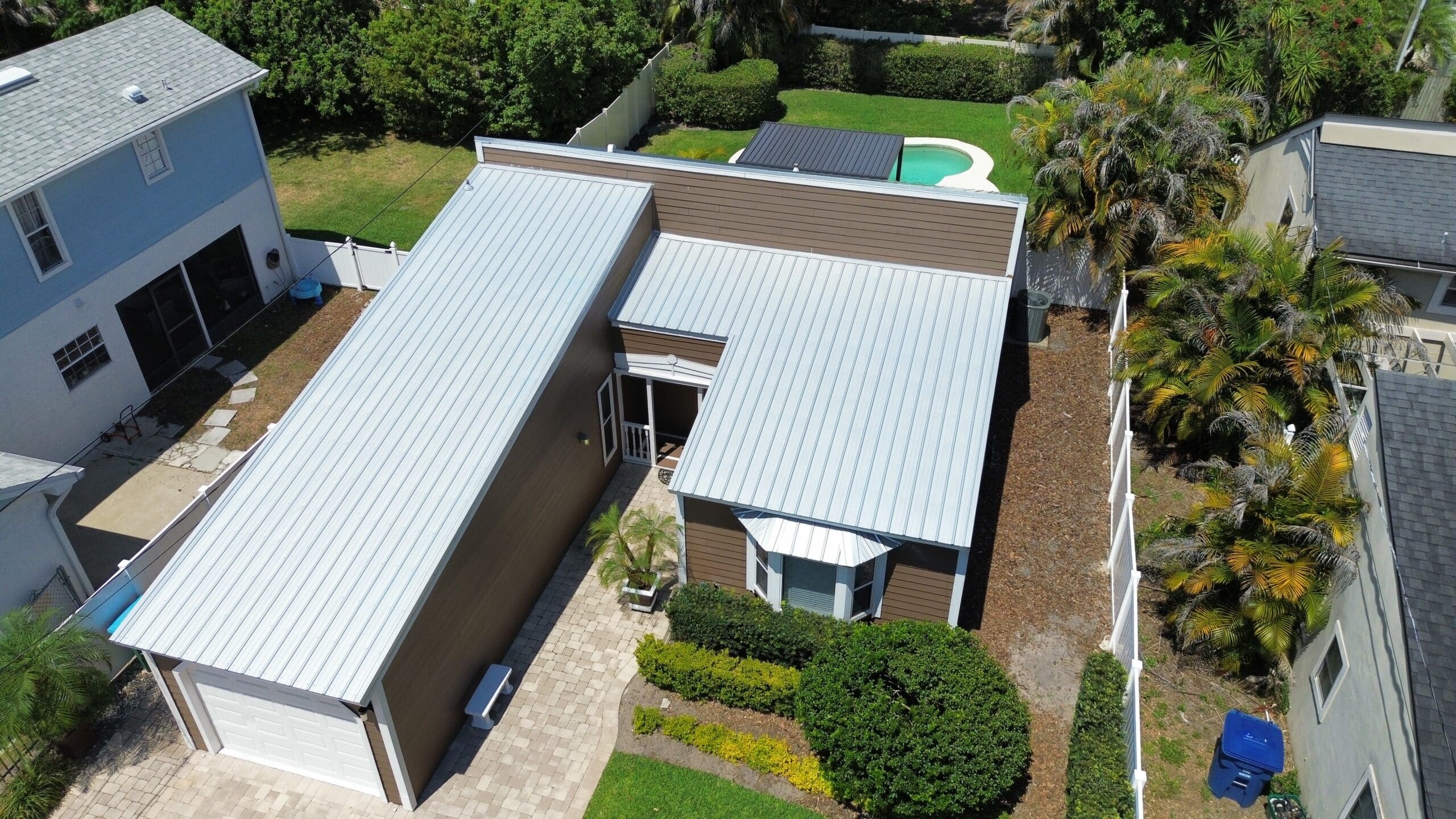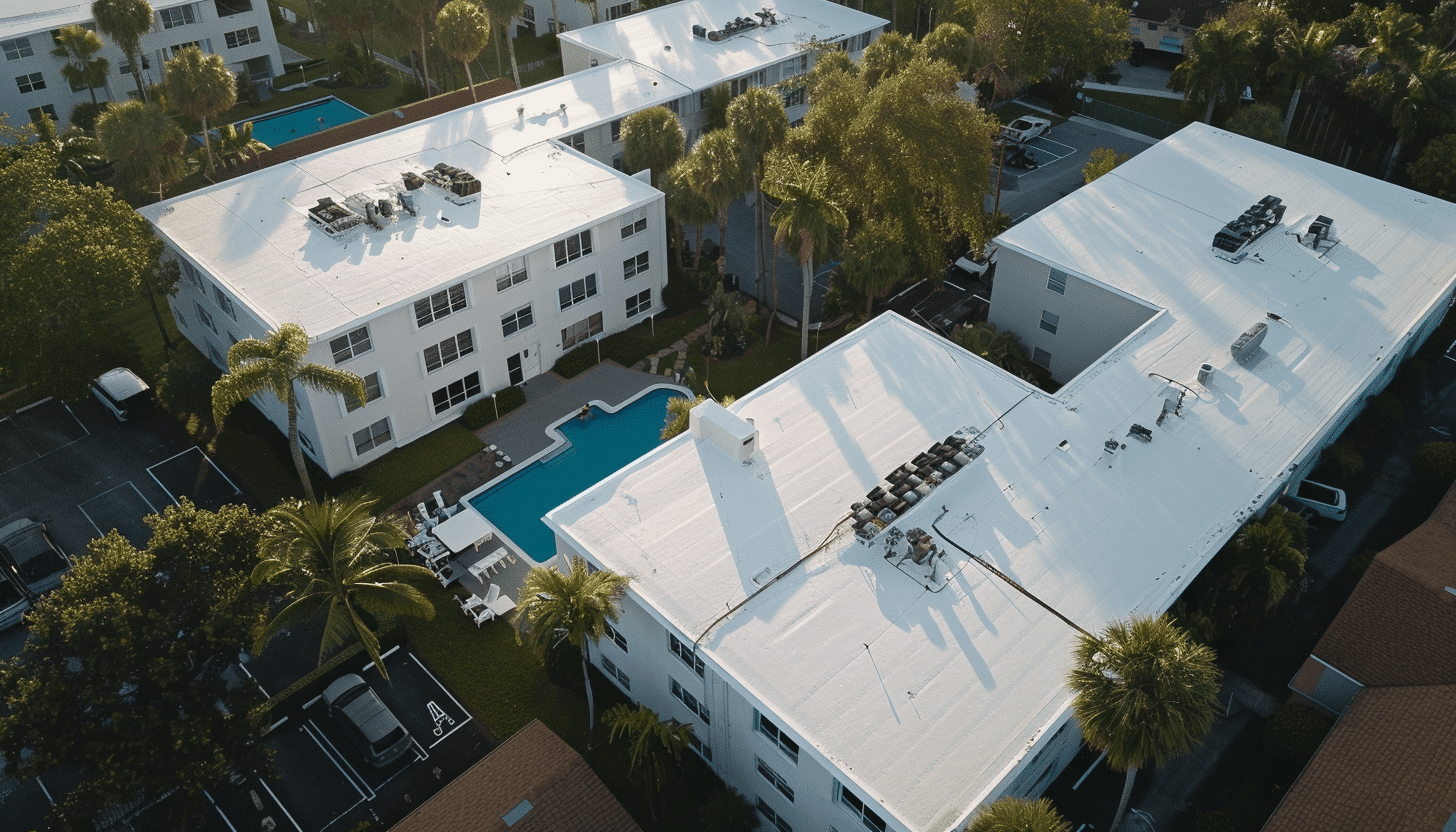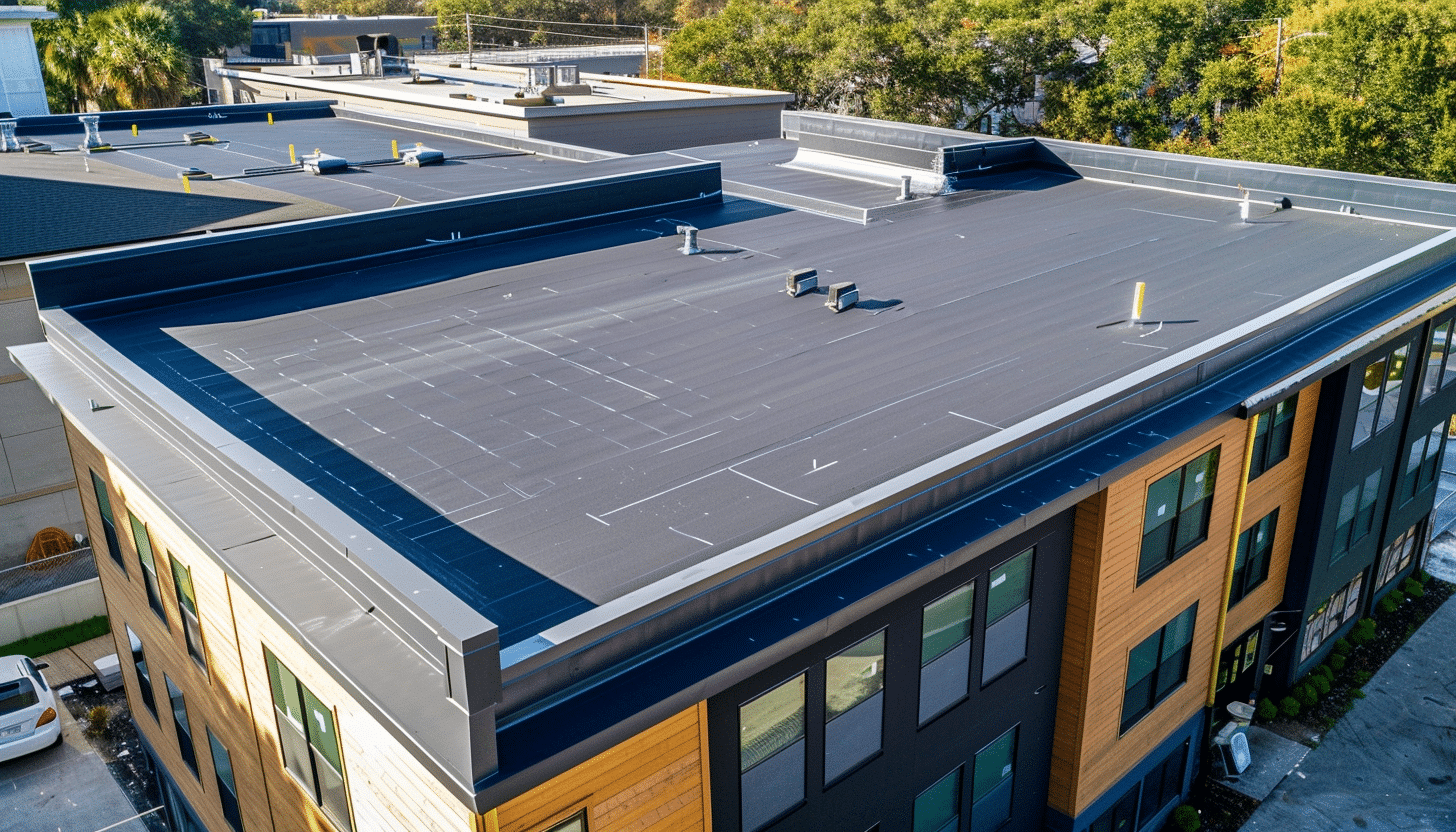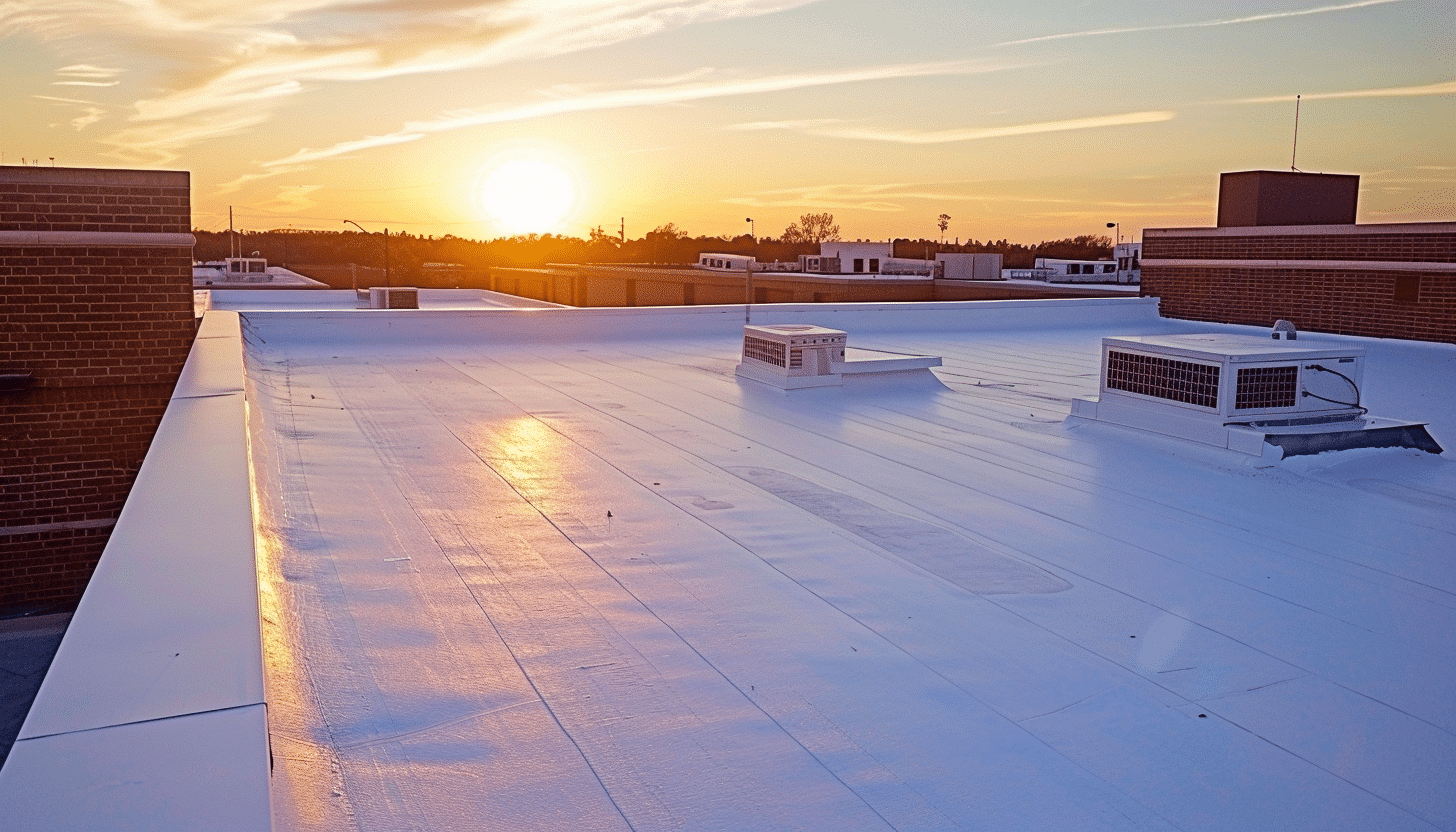Flat roofs are a popular choice for both residential and commercial buildings due to their modern aesthetic and efficient use of space. However, they come with unique challenges, particularly in maintaining durability and preventing leaks. Choosing the right sealant is crucial for ensuring long-term flat roof protection. In this blog, we’ll explore the best sealants available, their benefits, and how they can help you maintain a robust and leak-free flat roof.
Why Flat Roofs Need Protection
Flat roofs, despite their name, are not entirely flat; they have a slight pitch to allow water drainage. However, they are more prone to water pooling, which can lead to leaks and structural damage if not properly protected. The harsh Florida climate, with its intense heat and heavy rainfall, can further exacerbate these issues. Therefore, selecting the right sealant is essential to enhance the longevity and performance of your flat roof.

The Importance of Flat Roof Sealants
Sealants play a vital role in flat roof protection by providing a waterproof barrier that prevents moisture from penetrating the roofing material. This barrier helps in:
- Preventing Leaks: Effective sealants prevent water from seeping through the roof surface, reducing the risk of leaks.
- Enhancing Durability: Sealants add an extra layer of protection, extending the life of your roof.
- Energy Efficiency: Certain sealants can reflect sunlight, reducing heat absorption and lowering cooling costs.

Types of Flat Roof Sealants
There are several types of sealants available, each with unique properties suited for different flat roofing needs. Here’s a detailed look at the most effective ones:
1. Acrylic Sealants
Acrylic sealants are water-based and are known for their UV resistance and flexibility. They are ideal for roofs exposed to high levels of sunlight.
Benefits:
- UV Resistant: Protects the roof from sun damage.
- Flexible: Can expand and contract with the roof, preventing cracks.
- Easy Application: Can be applied with a brush, roller, or spray.
2. Silicone Sealants
Silicone sealants offer excellent moisture resistance and are highly durable, making them perfect for regions with heavy rainfall.
Benefits:
- Waterproof: Provides a robust barrier against water.
- Durable: Long-lasting protection against weather elements.
- Heat Resistant: Can withstand high temperatures without degrading.
3. Polyurethane Sealants
Polyurethane sealants are known for their strong adhesion and elasticity, suitable for a variety of roofing materials.
Benefits:
- Strong Adhesion: Bonds well with different roofing surfaces.
- Elasticity: Accommodates roof movements without cracking.
- Resistant to Chemicals: Can withstand exposure to various chemicals.
4. Rubberized Asphalt Sealants
Rubberized asphalt sealants are particularly effective for roofs that need extra protection against physical damage.
Benefits:
- Impact Resistant: Protects against physical damage and punctures.
- Waterproof: Excellent water resistance.
- Affordable: Cost-effective solution for flat roof protection.

Application Methods for Flat Roof Sealants
Applying sealants correctly is crucial to ensure maximum effectiveness. Here are the steps involved in sealing a flat roof:
1. Surface Preparation
- Cleaning: Remove debris, dirt, and any existing loose material from the roof surface.
- Inspection: Check for any damage that needs repair before applying the sealant.
2. Applying the Sealant
- Tools: Use appropriate tools such as brushes, rollers, or spray equipment depending on the type of sealant.
- Technique: Apply evenly to ensure a uniform layer of protection.
3. Drying and Curing
- Time: Allow sufficient time for the sealant to dry and cure as per the manufacturer’s instructions.
- Weather Conditions: Ensure application during favorable weather conditions to avoid issues with adhesion and curing.

Maintenance Tips for Flat Roofs
Regular maintenance is key to prolonging the life of your flat roof and ensuring the effectiveness of the sealant. Here are some tips:
Regular Inspections
- Frequency: Conduct inspections at least twice a year and after severe weather events.
- Focus Areas: Pay attention to seams, flashing, and areas around roof penetrations.
Cleaning
- Debris Removal: Keep the roof free of debris to prevent water pooling and damage.
- Gutter Maintenance: Ensure gutters and downspouts are clean and functioning properly.
Prompt Repairs
- Damage: Address any signs of damage or wear immediately to prevent further issues.
- Sealant Reapplication: Reapply sealant as needed to maintain a strong protective barrier.
FAQs
What is the best type of sealant for flat roofs?
The best type of sealant depends on your specific needs. Acrylic sealants are great for UV protection, silicone sealants offer excellent waterproofing, polyurethane sealants provide strong adhesion and flexibility, and rubberized asphalt sealants are ideal for impact resistance.
How often should I reseal my flat roof?
It depends on the type of sealant used and the environmental conditions. Generally, flat roofs should be resealed every 5-10 years, but it’s best to follow the manufacturer’s recommendations and conduct regular inspections to determine when resealing is needed.
Can I apply flat roof sealant myself?
Yes, you can apply flat roof sealant yourself if you have the right tools and follow the application instructions carefully. However, for best results and to ensure proper application, it is advisable to hire a professional roofing contractor.
How do I know if my flat roof needs resealing?
Signs that your flat roof needs resealing include visible cracks or splits in the sealant, water pooling, leaks, and overall wear and tear. Regular inspections will help identify these issues early.
Are there eco-friendly flat roof sealants?
Yes, many manufacturers offer eco-friendly flat roof sealants that are low in VOCs (volatile organic compounds) and made from sustainable materials. These sealants provide effective protection while minimizing environmental impact.
Conclusion
Choosing the right sealant is crucial for flat roof protection, ensuring your roof remains durable, waterproof, and energy-efficient. By understanding the different types of sealants and their benefits, you can make an informed decision that best suits your roofing needs. Regular maintenance and timely repairs will further enhance the longevity of your flat roof, providing you with peace of mind and protection for years to come.
For the best results, consider consulting with a professional roofing contractor like Savage Roofing, who can provide expert advice and quality sealant application, ensuring your flat roof remains in top condition.

0 Comments